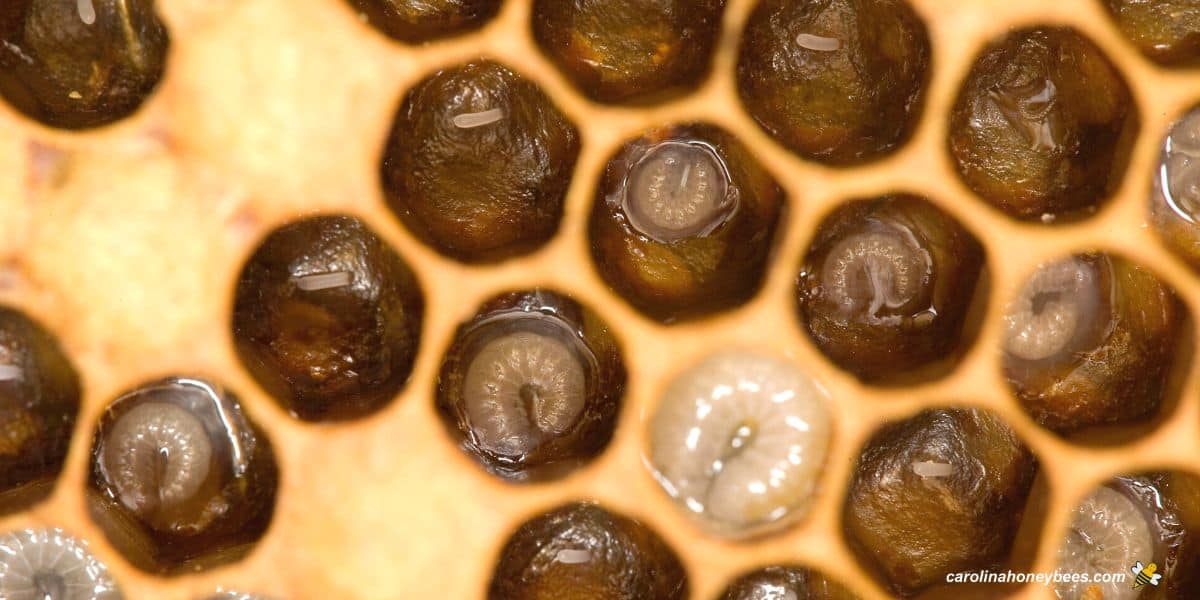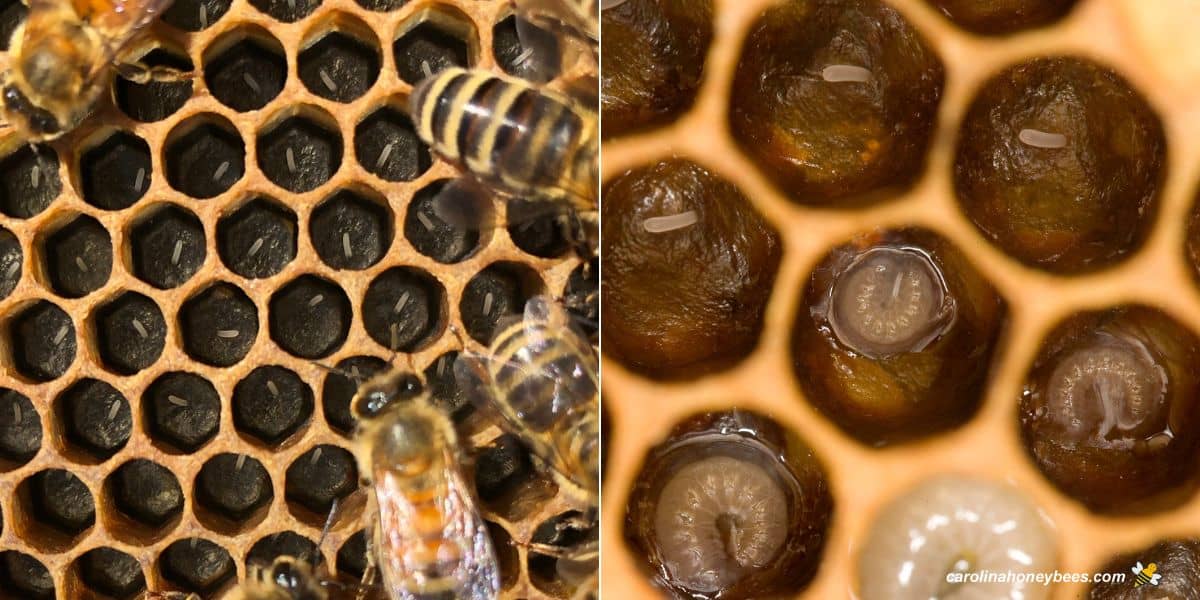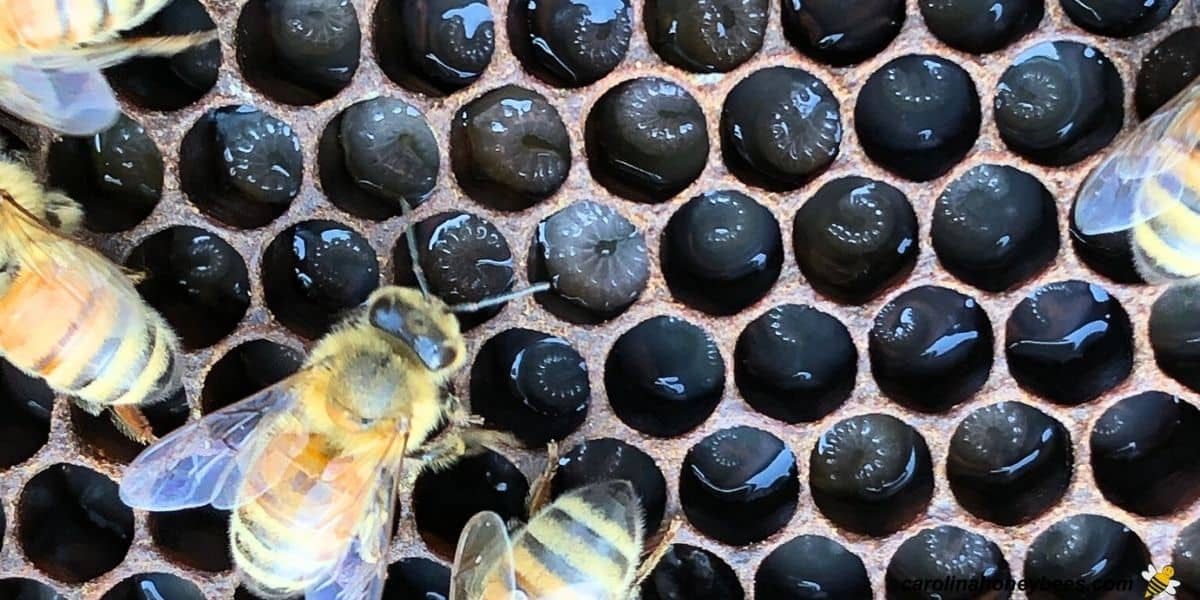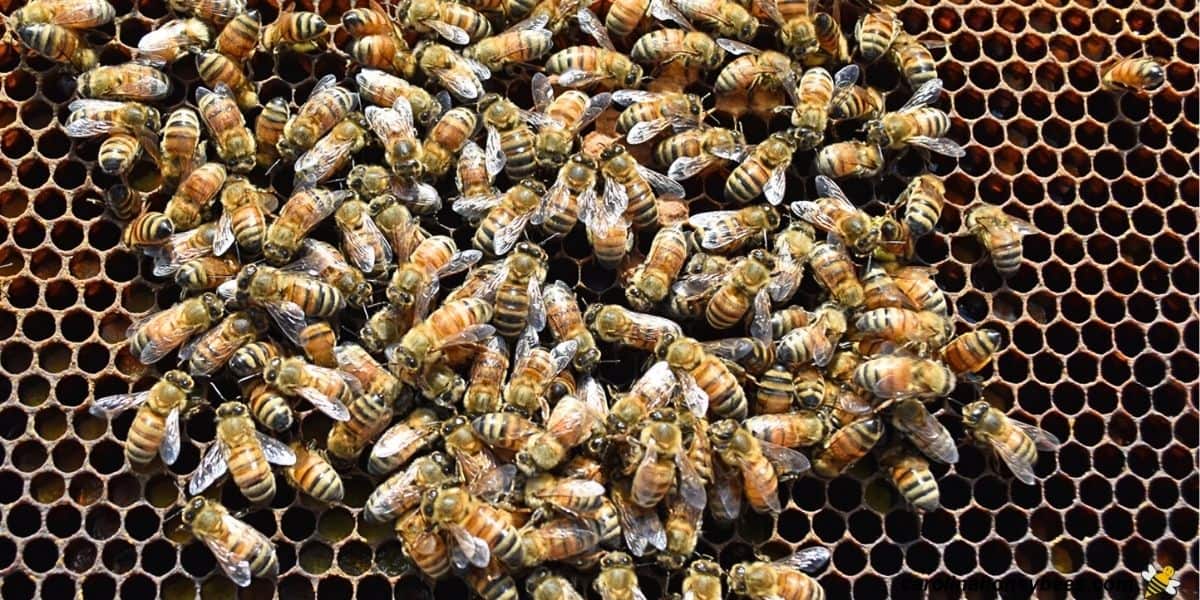Honey Bee Larvae
Honey bee larvae represent the second stage of honey bee development. They are not small replicas of their parents – but small white grubs requiring constant care. They are the future for the colony as they will become the new work force. The health of larvae in a colony is an good indicator of the overall well being of the hive. For beekeepers, learning how to recognize healthy larvae is an important skill.

As a Master Beekeeper, a quick peek at the various stages of the honey bee life cycle has become second nature. By, now – problems really jump out at me. But, for new beekeepers this skill takes a while to develop.
What are Honey Bee Larva?
Beginning beekeepers are often surprised when they first see bee larvae nestled in honeycomb cells. In fact, they sometimes think they have little white worms in the hive. But, these tiny white maggot-like grubs are the next generation of bees (Larva – singular – larvae – plural).
The action begins when the queen bee lays a fresh bee egg in a wax cell. After a few days, the egg transforms into a larva.
Honey bee larva don’t truly hatch in the same manner as chickens – but this word is commonly used.

Larval Stages: Instar and Molting
In the beginning, the bee larva is so small that you may struggle to see it. As the egg coating dissolves, a tiny white worm appears.
These white c-shapes in the bottom of cells are hard to see. But, once they are several days old (3-4) even the most inexperienced beekeeper can find them.
Each honey bee larva goes through 5 stages of growth called “instars”. At the end of each instar -the larva molts.
A common occurrence in insects, molting allows the outer covering (skin) to shed off and a new larger one takes place. This allows the bee grub to grow.
By day 5-6, the larvae are big enough to fill the bottom of the cell. This is handy information for the beekeeper. When I see larvae large enough to cover the bottom of the cell, I know they will soon reach the next stage of development.
At this point the feeding stage is ending. Worker bees close the cells with a wax covering and the bee larvae spins a cocoon and enters the pupal stage of development.

Larval Care in the Colony
Young workers in the colony serve as nurse bees for a period of their adult lives. They are attracted to brood cells where young are being reared by bee pheromones.
Several days prior to beginning their duties, nurse bees eat large amounts of bee bread (fermented pollen). This helps their brood food glands mature and prepare to secrete food.
A nutritious milky white liquid is placed in the cells. For very young larvae, this substance is called royal jelly.
For the first few days, nurses provide much more food than a larva can consume. The young are floating on a bed of royal jelly. That’s why bee larvae are often called “milk brood”.
In the larval stage, bee grubs grow at an amazing rate. All they do is lay there and eat. They can not leave the cell so food must be delivered.
Members of the colony also take care of the area surround developing young. The brood nest must be kept at a viable temperature and humidity for optimum development.

Nutritional Differences
The diet of honey bee larvae varies a bit depending on their future role in the hive.
Larvae that develop from fertilized eggs will be female. They can become workers or queens. Larvae from unfertilized eggs drones (male bees).
In the beginning, all young bee larvae are fed royal jelly. However, when they reach about day 3, the diet changes a bit.
Those destined to become workers are fed a mixture that includes some honey and pollen. Developing drones are fed pretty much the same.
But, those larvae destined to become queens, are fed larger amounts of royal jelly throughout this development stage. And perhaps more important, they are not feed honey and pollen.
Researchers believe this diet is what allows females to develop into reproductive queens instead of regular workers.
It is estimated that a nurse bee makes 3,000 visits to a brood cell during the larval stage. This makes it easy to understand why you need a healthy, strong colony to rear brood.

Signs of Healthy Bee Larvae
Healthy honey bee larvae are easy to spot once you know what to look for. But then, we can say that about a lot of beekeeping tasks – right?
- larvae are bright white in color, with a moist glossy appearance
- body is soft, segmented and plump
- young larvae of workers, drones and queens all look similar – just in different cell sizes
- a good brood pattern – indicated by larvae of similar ages grouped together
- healthy larvae will have stores of pollen-bee bread and honey nearby for easy access
Signs of Unhealthy Larvae
Unhealthy bee larvae can also be easy to recognize. They may appear discolored – dingy, brown – even black.
Sick or diseased larva may be deformed or shrunken in size. They may look slimy and give off a foul odor. However, dead larva are not always a sign of disease.
In my apiary, I sometimes have “chilled brood” early in the season. The colony that gets a head start on brood rearing in later Winter may be affected by a cold snap. Too much brood – not enough bees to keep it warm results in dead larvae.
Threats and Challenges
Honey bee larvae do face some challenges along the way. They must be well fed and kept within a certain range of temperature and humidity.
In addition to a threat due to chilling, they are also a prime target for pests and parasites such as the varroa mite. Varroa mite treatments when necessary are needed to prevent the weakening of the colony.

Also, diseases that affect bee larvae – such as European Foulbrood (EFB) and the more serious American Foulbrood (AFB) can be a danger. Monitoring for these is an important part of beehive management.
FAQs
Workers feed brood food produced by special glands to bee larvae. It contains royal jelly and other nutritious substances.
Bee larvae go through 5 instars during the growth stage. Each instar has a period of growth followed by molting of the exoskeleton.
On average, the larval stage lasts about 6 days – a bit longer for workers and drones.
Yes, humidity and temperature can have a substantial affect on developing bees.
Finally
Honey bee larvae play a pivotable role in the success of the colony. Their transformative journey to adulthood prepares them for the job ahead. But, they rely on good growing conditions and care from a population of healthy workers.

